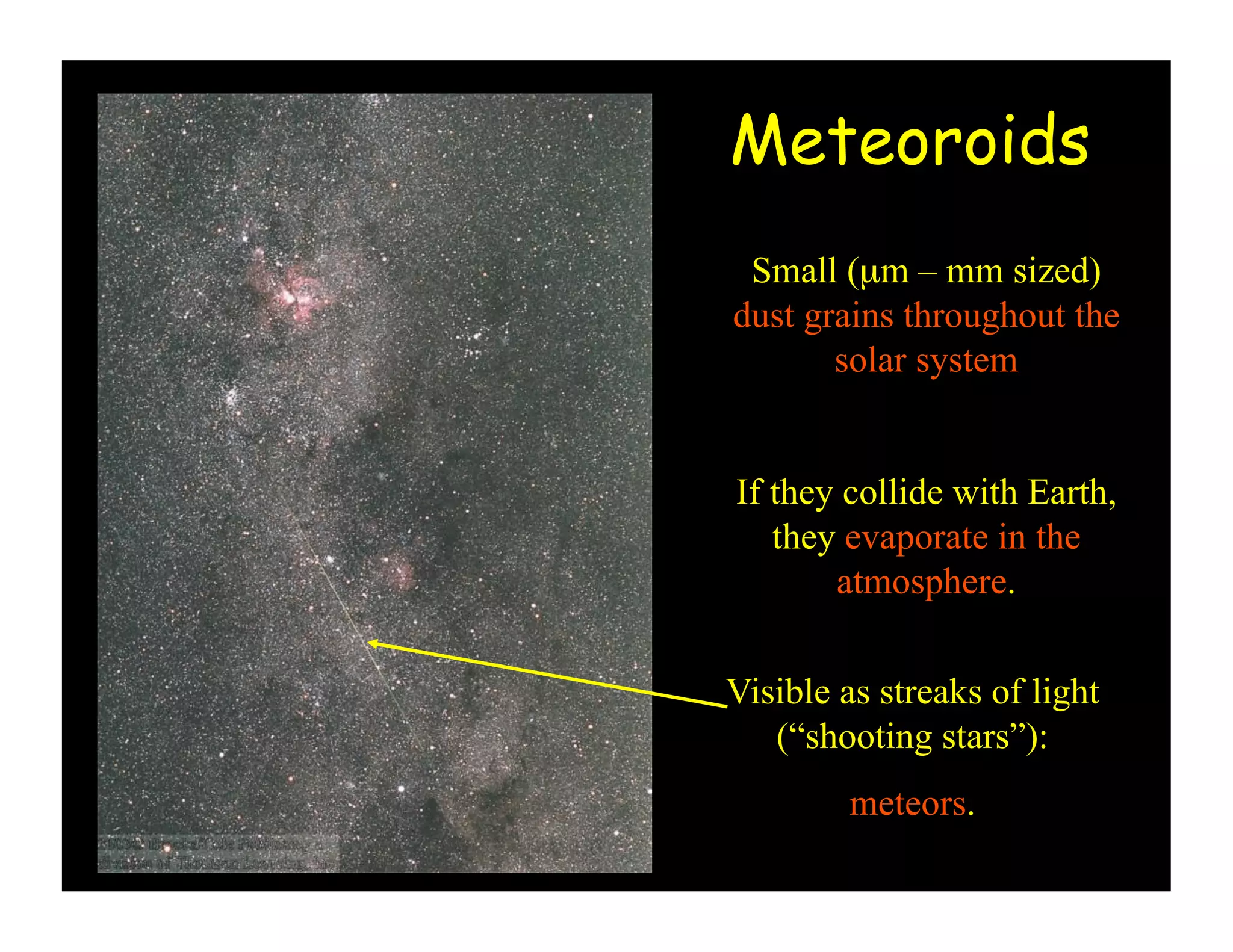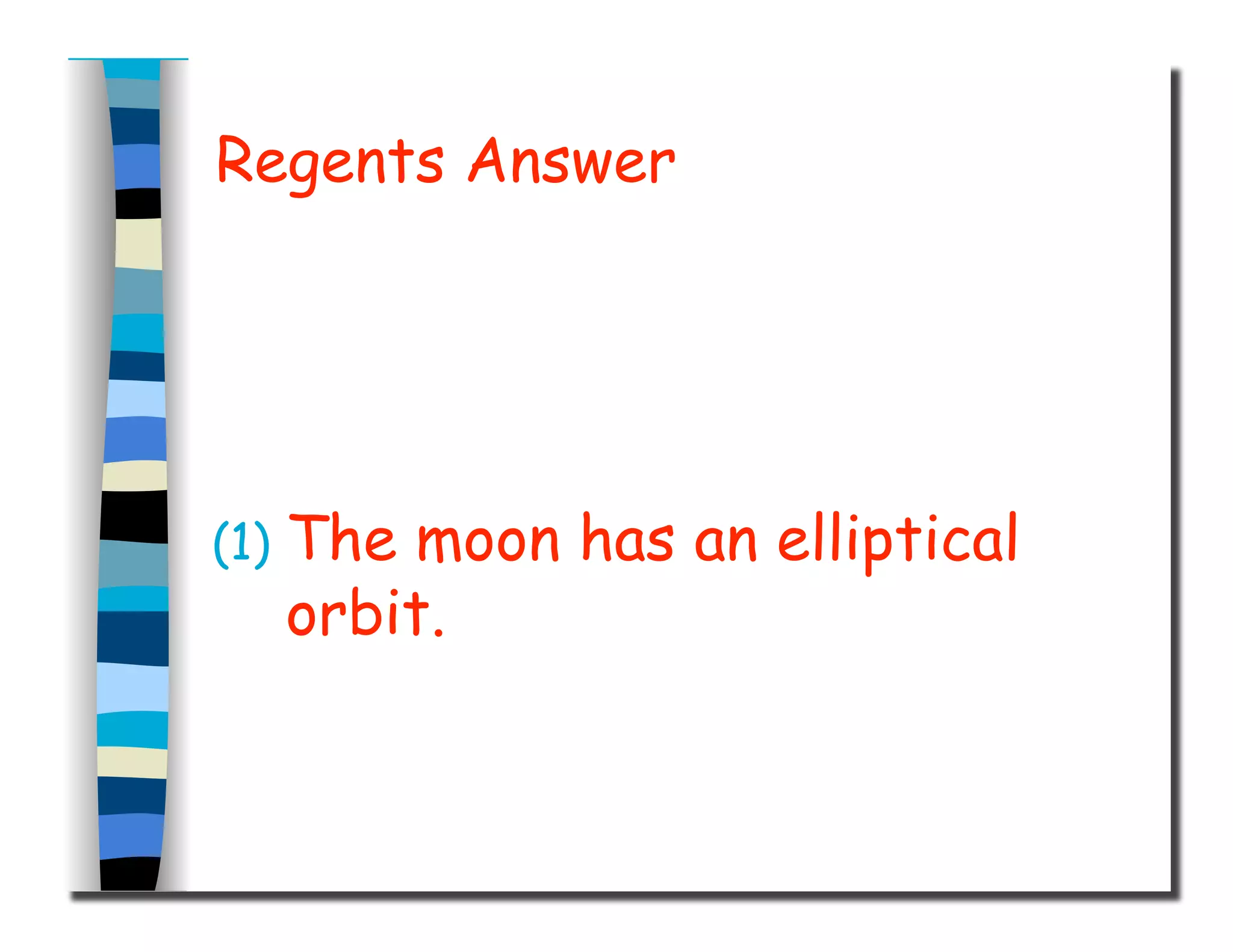The document summarizes key information about astronomy and the universe:
1) The universe started as a single extremely dense point that exploded in an enormous explosion known as the Big Bang around 12-15 billion years ago and has been expanding ever since.
2) Evidence for the expansion of the universe comes from the Doppler effect observed in the redshift of light from galaxies moving away from us as the universe expands.
3) Astronomers use large units like light years to measure the vast distances between celestial objects, where one light year is the distance light travels in one year.













































































































































































![Regents Question
The diagram below shows how Earth is
illuminated [lighted] by the Sun as viewed
from above the North Pole.
In which orbital position would Earth be
illuminated as shown?
(1)A (3) C
(2)B (4) D](https://image.slidesharecdn.com/unit8astronomy09-10-101024160150-phpapp02-141130160100-conversion-gate02/75/Unit8astronomy09-10-101024160150-phpapp02-174-2048.jpg)










































































